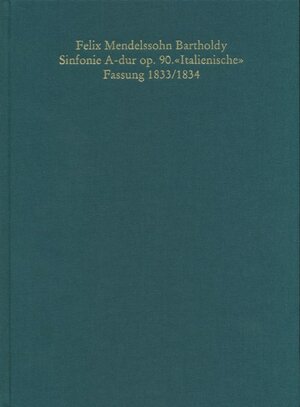
Felix Mendelssohn-Bartholdy. Sinfonie A-Dur op. 90, »Italienische«
Faksimile
von John Michael Cooper und Hans-Günter KleinLike many before and perhaps even many more after him, the young Felix Mendelssohn Bartholdy saw in Italy the country of the greatest joy of living. In his letters that he wrote home to his family in Berlin from Venice, and even more in the ones from Rome, he was full of enthusiasm. It is therefore only natural that the composer soon went about writing a symphony. How far he had got with the symphony during his journey to Italy in the winter of 1830/1831 is not known, as no musical manuscripts have survived from this period. What has survived is the autograph score of the A-major symphony (later to be called the „Italian“ symphony), written down from January to April 1833 in Berlin. It was used for the première of the symphony on 13 May 1833 and served as the basis for the posthumously published first edition; it transmits the reading by which the symphony has been known until today.
It is little known that Felix Mendelssohn Bartholdy worked on the symphony again in 1834, revising the movements II to IV, partly with substantial changes. He left out the first movement – he thought that he would have to rewrite it altogether and shied away from doing so. Thus, the second score – which is now held in the Staatsbibliothek zu Berlin – Preußischer Kulturbesitz, together with the 1833 autograph – remained unfinished. Additional fragments have survived, which belong to the autograph score of 1833; the composer had taken them out of his autograph during a major revision in March/April 1833 (i. e., before the première).


